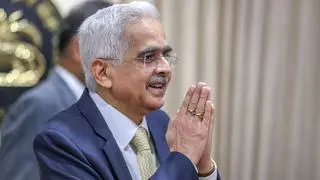What are the characteristics of a smart city?
There’s no universally accepted definition of what makes a smart city. Smart Cities Council, an international coalition of companies working to advance the liveability, workability and sustainability of the world’s cities, notes that it’s still in the ‘I know it when I see it’ stage. The Council broadly defines a smart city as one that has digital technology embedded across all city functions.
The Smart Cities Mission of the Ministry of Urban Development lists the “core infrastructural elements” that a smart city would incorporate: among them, adequate water supply; assured electricity; sanitation; efficient public transport; affordable housing (especially for the poor); robust IT connectivity and digitisation, e-governance and citizen participation; sustainable environment; safety and security for citizens; health and education.
In short, everything that our cities should have today, but don’t.
So, what will a smart city look like?
Conservation of resources is a core principle of the smart city concept. So, at least 10 per cent of a smart city’s power requirement will come from solar energy. Urban local bodies will make it mandatory for buildings to have solar rooftops.
At least 80 per cent of buildings in greenfield (or city extension) projects will be energy-efficient. Likewise, street lights will be energy-efficient. Technology-driven traffic management systems will smoothen traffic flows. To conserve water, rainwater harvesting and waste water recycling plans will be mainstreamed.
Experientially, smart cities will seek to enhance the quality of life of its residents by providing more parks, playgrounds, pedestrian-friendly pathways and bicycle tracks, and incentivising wider use of public transport facilities and improving last-mile connectivity.
Public spaces will be cleared of encroachments, and those unsightly overhead wires will be replaced with underground cables.
A network of CCTV cameras will be installed to enhance safety in public spaces.
Is all this practicable in our cities?
The challenges of infusing our old cities with technology-driven smartness are, of course, immense.
But the Smart Cities Mission has proposed three models of area-based development: retrofitting (to make existing built-up areas more liveable); redevelopment (to replace existing built-up areas and enable co-crearing of a new layout with enhanced infrastructure using mixed land use and increased density); and greenfield development (developing hitherto-vacant areas, with innovative planning and providing affordable housing for the poor).
Who will implement it?
The State governments and urban local bodies, with help from the Ministry of Urban Development and the National Mission Directorate.
Where will the funds come from?
The Centre will provide ₹200 crore per city in the first year, and ₹100 crore each year for four years.
The States will have to match the contribution. The funding model also envisages public-private partnerships, issue of municipal bonds, allocations from the National Investment and Infrastructure Fund and borrowings from bilateral and multilateral institutions, including the World Bank. An enhancement in user charges (under which, residents will pay more for availing of urban infrastructural facilities, including water, power and land) will also fund the projects.
So, it’s all good, is it?
The smart city concept taps into the aspirations of an emerging middle-class, but the idea is not above criticism from urban planners who argue that a bias in strategic interest may blind authorities to ignoring alternative avenues of promoting urban development. Others flag the risk that projects of this scale typically harvest big data, raising privacy concerns.
What does it mean for me?
Expect changes in urban planning laws that will recalibrate property taxes, require you to mandatorily install resource-saving efforts (rooftop solar panels for houses, water conservation measures).
Since the effort is to incentivise public transport, you will also pay more for parking in public spaces, for instance.
On the upside, if implemented well, these proposals can make cities truly more liveable.







Comments
Comments have to be in English, and in full sentences. They cannot be abusive or personal. Please abide by our community guidelines for posting your comments.
We have migrated to a new commenting platform. If you are already a registered user of TheHindu Businessline and logged in, you may continue to engage with our articles. If you do not have an account please register and login to post comments. Users can access their older comments by logging into their accounts on Vuukle.